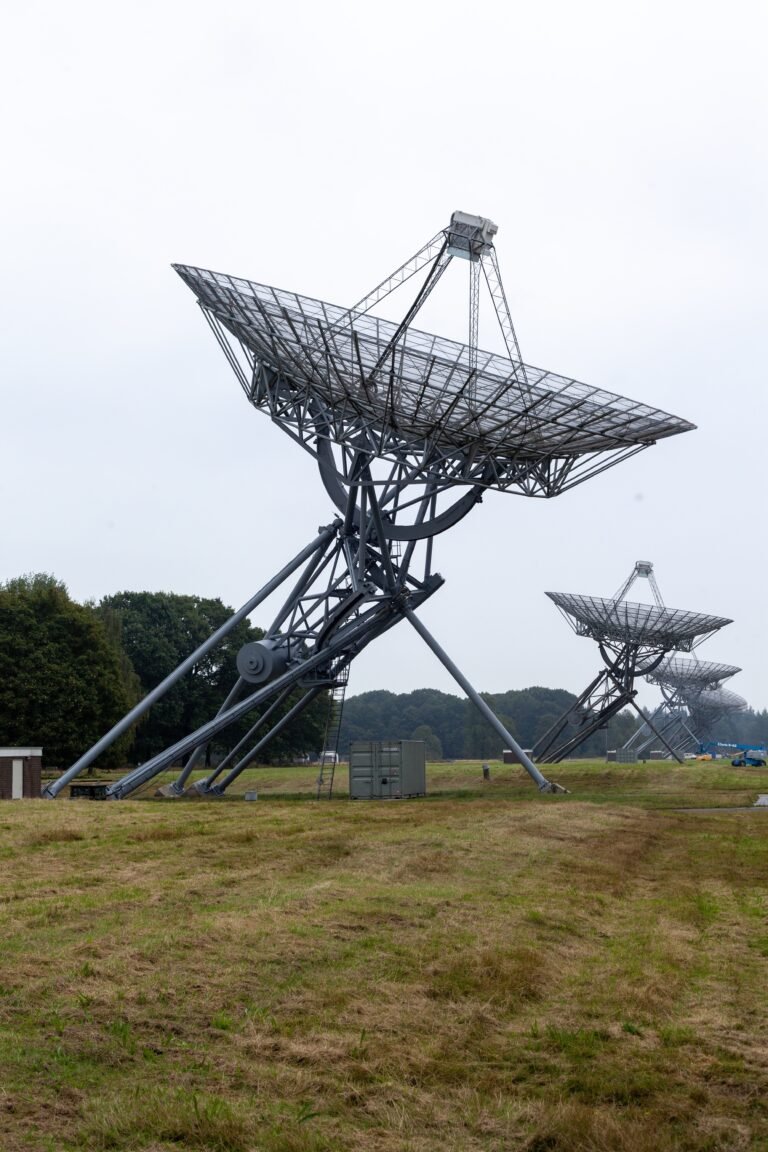The Space Economy Explained: 7 Industries You Can Invest In Today

The space economy is no longer science fiction — it’s a fast-growing global market where governments, billionaires, startups and ordinary retail investors can all find opportunities. From the satellites that beam internet and GPS to your phone, to raw-material prospects on asteroids and planned lunar bases, the space economy touches commerce, defense, climate science and everyday life. In 2024 the global space economy already exceeded $600 billion, and the commercial sector continues to drive much of that growth. If you want to invest in space today, understanding the seven core industries that make up this economy — the technologies behind them, the risks, and the straightforward ways to get exposure — is the best place to start. Space Foundation

Why invest in the space economy now?
Three forces are converging to make space investing realistic today: dramatically lower launch costs; proliferation of small, capable satellites; and commercial demand for data, connectivity and logistics. Between cheap reusable rockets and standardized small-satellite buses, the barrier to entry for new space firms has dropped. That means more startups, more public listings and more ETFs and funds offering retail access to space exposure. At the same time, government programs (like NASA’s Artemis) continue to award contracts to private partners — creating near-term revenue streams for companies building lunar systems and related hardware. NASA
1) Satellite Communications & Broadband — the backbone of today’s space economy
What it is
Satellite communications include geostationary satellites (traditional TV, long-distance links) and low-Earth-orbit (LEO) mega-constellations that provide broadband internet to underserved areas. These systems supply backbone connectivity for remote regions, maritime and aviation, emergency response, and increasing numbers of IoT devices.
Why it’s investable
- Demand for global, low-latency connectivity keeps rising.
- LEO constellations enable new business models (consumer internet, B2B backhaul, mobile connectivity).
- Satellite operators earn recurring revenue via subscriptions, enterprise contracts and government deals.
Notable players & vehicles
- SpaceX / Starlink (private division of SpaceX) — one of the fastest-growing LEO internet systems; by mid-2025 it reported multi-million user counts. Wikipedia
- Public companies: Viasat, Loral (Via EchoStar), Intelsat (when public/private events occur).
- ETFs offering exposure: Procure Space ETF (UFO) and ARKX include satellite-related firms in their holdings. Procure – Procure
Investment tips
- For broad exposure, consider space-themed ETFs (UFO, ARKX) rather than single stocks.
- For targeted bets, invest in companies supplying satellite components (antennas, propulsion, ground terminals) which can be less cyclical.
- Monitor regulatory moves: spectrum allocation and cross-border licensing materially affect revenues.
2) Earth Observation & Geospatial Data Analytics — data is the new gravity
What it is
Earth observation (EO) satellites image the planet for agriculture, insurance, climate monitoring, urban planning and defense. The value is not only in pictures but in processed insights: predictive analytics, time-series monitoring and AI-driven change detection.
Why it’s investable
- Climate risk management and sustainability reporting create constant demand for EO data.
- Corporations and governments pay for analytics subscriptions (SaaS-style recurring revenue).
- EO companies are increasingly partnering with cloud providers and defense agencies.
Notable players
- Planet Labs (planetary daily imagery), Maxar, BlackSky and other specialized analytic startups. Defense primes also buy and resell this data.
Tip & example
- Agricultural companies can use EO analytics to optimize planting and chemical use — lowering costs and improving yields. Investors should watch firms that combine EO with AI analytics because that’s where margins live.
3) Space Launch, Rideshare & Logistics — the pipes of the space economy
What it is
Launch services deliver satellites and cargo to orbit. Today’s market includes heavy-lift reusable rockets (for large payloads and human missions) and many small-launch or rideshare providers that cater to cubesats and microsatellites.
Why it’s investable
- Higher launch cadence = more satellites launched = more recurring revenues across the sector.
- Rideshare economics open the market to smaller constellations and commercial experimentation.
Who to watch
- SpaceX (largest provider of launch services globally), Rocket Lab, Relativity, and a growing set of national/private launchers.
- Rocket engine, avionics and ground-support suppliers often have steadier revenue streams than early-stage launcher startups.
Investment guide
- Consider suppliers to launch companies — engines, avionics, thermal systems — for diversified exposure.
- Track manifest backlogs: heavy demand for launch slots signals multi-year revenue visibility.
4) Space Tourism, Stations & Commercial Habitats — experiential and commercial human spaceflight
What it is
This sector includes suborbital tourist flights, orbital tourism aboard private spacecraft, and the development of commercial space stations and hotels.
Why it’s investable
- It’s high-margin and high-visibility: early customers pay premium prices for unique experiences.
- Long-term, commercial stations could host research, manufacturing and tourism revenue streams.
Examples & players
- Virgin Galactic, Blue Origin, and private firms partnering with NASA to build commercial stations (e.g., Axiom Space, Sierra Space).
- Axiom and other players are pursuing NASA contracts to host astronauts and build modules, which provide near-term revenue and long-term commercial prospects.
Entertainment note
- Expect celebrity flights, branded experiences, and corporate retreats in orbit over the coming decade — an unlikely but plausible part of many travel portfolios.
Investment tips
- Space tourism is speculative and expensive — consider small allocation or indirect exposure via suppliers (life-support, crew training, space hospitality tech).
5) Space Manufacturing & Advanced Materials — microgravity’s unique advantage
What it is
Manufacturing in microgravity enables new materials, purer crystals and structures that are impossible to produce on Earth. Use cases include fiber optics, biomedical products, and 3D-printed components for space infrastructure.
Why it’s investable
- Products manufactured in orbit can command premium prices if they solve manufacturing limitations on Earth.
- On-orbit manufacturing reduces the need to launch heavy finished goods from Earth (cost savings for long-term projects).
Notable firms & technology
- Made In Space (in-orbit 3D printing), Redwire, and companies working on additive manufacturing hardware and in-space assembly.
Tip
- Short-term investor returns will likely come from technology licensing, government contracts and B2B partnerships with large aerospace primes.
6) Space Resources & In-Space Propellant — the long game with high upside
What it is
Space resources include water ice on the Moon and volatile-rich asteroids that can be processed into fuel (hydrogen, oxygen) or raw materials (metals). In-space propellant would allow spacecraft to refuel in orbit, enabling more ambitious missions and lowering launch mass from Earth.
Why it’s investable
- If in-space refueling becomes practical, launch and mission economics change dramatically — enabling lower-cost deep-space missions and more frequent activity.
- Early-stage investments focus on prospecting, ISRU (in-situ resource utilization) tech and robotic mining support systems.
Reality check
- Large-scale extraction is still early-stage and decades from commercial maturity. Investors should view near-term plays as technology and infrastructure bets, not immediate cash flow generators.
Who to watch
- Startups developing ISRU tech and public-private partnerships with national space agencies. Also watch robotics and autonomous-systems companies enabling prospecting.
7) Lunar & Mars Infrastructure (government contracts + private builds)
What it is
This industry covers habitat modules, lunar landers, energy systems, rovers, and the whole stack that enables sustained human presence on the Moon and, eventually, Mars.
Why it’s investable
- Government-funded programs (like NASA’s Artemis) create large contracts that flow to private partners; companies winning these contracts can see significant multi-year revenue. NASA
- Private firms building scalable habitats, life-support and surface logistics stand to benefit if a permanent presence develops.
Investment approach
- Track government procurements and contract awards — they are often the clearest short-to-medium-term revenue signals.
- Diversify among contractors, subsystem suppliers, and software/SaaS providers for mission planning and operations.
Investment vehicles: how retail and accredited investors can gain exposure
| Vehicle | Who it’s best for | Pros | Cons |
|---|---|---|---|
| Space ETFs (e.g., UFO, ARKX) | Retail investors | Diversified, liquid, easy entry. | Broad exposure, may include non-space companies. Procure – Procure |
| Individual aerospace stocks | Investors comfortable with stock picking | Targeted exposure to winners. | Higher company-specific risk. |
| Defense & primes (Lockheed, Northrop, Raytheon) | Conservative investors | Stable, government contract revenue. | Less pure-play space exposure. |
| Private VC / angel rounds | Accredited investors | Early upside, direct startup play. | Illiquid, high failure rate. |
| Bonds/contract-backed vehicles | Institutional / high-net-worth | predictable cash flows (if government-backed) | Less upside, limited access for retail. |
Note: ETFs like UFO and ARKX specifically target space-related firms and are a practical starting point for most retail investors. Procure – Procure
Risks every space investor should understand
- Capital intensity — building rockets, satellites and habitats costs a lot and requires sustained investment.
- Technology risk — failures, delays, or design flaws can wipe out value.
- Regulatory & geopolitical risk — spectrum disputes, export controls and national priorities affect profitability.
- Market & demand risk — some markets (e.g., space tourism) may take longer to mature than expected.
- Debris & congestion — orbital congestion increases collision risk and can raise insurance and replacement costs. As of 2025, there are thousands of active satellites in orbit — an order-of-magnitude rise from previous decades. Live Science
Practical, actionable tips & tricks for investing in the space economy
- Start with a small allocation: Space is exciting but volatile — treat it like an early-stage sector (5% or less of a diversified portfolio, depending on risk tolerance).
- Use ETFs for core exposure: UFO and ARKX offer diversified, sector-specific exposure without single-name risk. Procure – Procure
- Follow contract awards: Government contracts (NASA, ESA, national space agencies) often precede revenue for contractors — monitor contract announcements. NASA
- Prefer suppliers & infrastructure: Engines, avionics, ground systems and analytics software often show steadier revenue than speculative consumer plays.
- Watch launch cadence and backlog: A healthy launch manifest often signals rising sector demand.
- Beware of hype: Avoid companies without credible technical milestones or transparent financials.
Info table — Snapshot of sector dynamics (2025 context)
| Industry | Maturity | Near-term revenue drivers | Typical time-to-commercial-scale |
|---|---|---|---|
| Satellite broadband | Mature–growing | Subscriptions, enterprise contracts | 1–5 years |
| Earth observation & analytics | Growing | SaaS subscriptions, defense sales | 1–3 years |
| Launch & rideshare | Growing | Rideshare contracts, gov launches | 1–3 years |
| Space tourism | Emerging | Ticket sales, VIP experiences | 3–10 years |
| Space manufacturing | Early | Research contracts, pilot products | 3–10+ years |
| Space resources (mining) | Nascent | Technology development, prospecting | 10+ years |
| Lunar/Mars infrastructure | Early | Government contracts, partnerships | 5–15+ years |
FAQs (5–7 questions)
Q1: How big is the space economy today?
A: The global space economy reached roughly $613 billion in 2024, with commercial activity responsible for a large share of growth. Expect continued expansion as commercial services scale. Space Foundation
Q2: Can small investors realistically participate in space investing?
A: Absolutely — ETFs such as Procure Space ETF (UFO) and ARK Space Exploration ETF (ARKX) provide retail-friendly exposure, and many public aerospace firms trade on major exchanges. Procure – Procure
Q3: What short-term subsectors have the most predictable revenue?
A: Satellite communications, Earth observation (SaaS data), and some launch services tied to manifest backlogs tend to produce more predictable near-term revenue.
Q4: Is asteroid mining a good investment today?
A: Asteroid mining is a long-term, high-risk play. Technology development and prospecting are currently the main avenues for investment; large-scale commercial operations are likely decades away.
Q5: How does orbital congestion affect investments?
A: More satellites mean greater demand but also higher collision risk and regulatory scrutiny. Companies focused on debris mitigation, collision avoidance software, and rapid replacement solutions could benefit.
Q6: What role do government contracts play in space investing?
A: Huge. Programs like NASA’s Artemis catalyze private investment and create multi-year contract streams that meaningfully reduce technology-company revenue risk. NASA
Entertainment: 5 fun facts to sprinkle into articles or presentations
- A single large asteroid may contain more valuable metals than the entire global supply on Earth (the idea helps explain why asteroid mining attracts attention).
- Microgravity manufacturing has already produced fiber-optic crystals with fewer defects than terrestrial equivalents.
- “Space hotels” are being planned by multiple companies — some aim for modular modules attached to commercial stations.
- Space-based solar power is a recurring idea: transmit energy from orbit to Earth via microwave or laser — technically plausible but expensive.
- As of 2025, there are thousands of active satellites—a dramatic rise from a decade earlier—meaning the skies will look busier every year. Live Science
How to build a practical space-investment watchlist (step-by-step)
- Pick your allocation and time horizon. Short horizon? favor established defense primes and spun-off satellite operators. Long horizon? include startups, manufacturing startups and resource plays.
- Add a “core” ETF (UFO or ARKX) for broad exposure. Procure – Procure
- Choose 2–3 “engine” stocks: launches and satellite operators.
- Pick 1–2 speculative plays (space tourism, in-space manufacturing) for optional upside.
- Monitor monthly: launch manifests, contract awards, regulatory permits, and subscriber metrics for broadband operators.
Conclusion
The space economy is vast, diverse and entering a phase where private investment complements government programs. Satellite broadband and Earth observation already deliver revenues and real-world value; launch logistics, manufacturing and lunar infrastructure are scaling; and long-shot ideas like asteroid mining remain attractive long-term bets. For most investors, a balanced approach combining broad ETFs, targeted stocks (suppliers and primes), and a small speculative component is a pragmatic way to participate. Space investing rewards patience: the sector mixes slow-moving government contracts with fast-paced commercial innovation. If you like frontier opportunities and can tolerate volatility, the space economy offers multiple ways to invest — today.






